A mature tree adds value, shade and beauty to the landscape. Keep trees healthy by following these tips:
- Plant trees that are well-suited to the site and are pest resistant.
- Consider your soil when selecting a tree. If you have high pH or salty soils, pick a species that will tolerate the conditions. Don't plant trees in poorly drained soil.
- Plan for the mature size of the tree, allowing adequate space. Consider nearby structures such as sidewalks that may be damaged by tree roots.
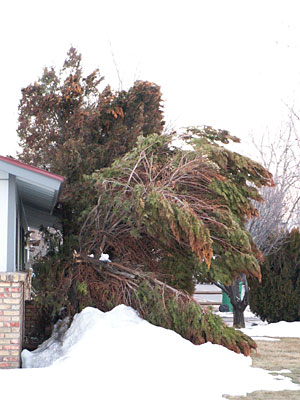
Plan for the eventual size of any tree that you plant. Consider proximity to structures and utility lines. This tree was pruned by the energy company to keep the branches away from the power lines. It is now permanently misshapen. This tree was planted too close to the house and is dying.
- Faster-growing trees generally require more water and pruning, and are more susceptible to diseases and breakage. They don't live as long as those with moderate growth habits.
- Water regularly during the growing season to a depth of 18 inches, out to the edge of the canopy. When using drip irrigation, make sure you have enough emitters.
- Add mulch around the tree, but don't let the mulch touch the trunk of the tree.
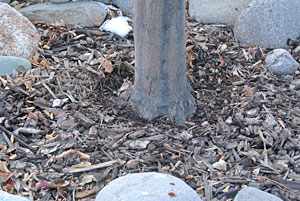
When mulching trees, keep the mulch away from the tree trunk to avoid pest problems.
- Prune appropriately, removing dead or diseased branches. Never top trees, as this leaves them susceptible to disease, pests and structural damage.
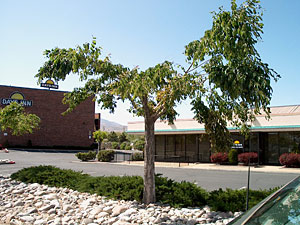
Topping destroys tree structures and can result in misshapen trees. Never top trees!
A Dozen Steps to Successful Landscape Tree Planting (from FS-94-45)
- Begin with a healthy tree that shows no signs of insects or disease, has a strong trunk, and roots that are not pot-bound.
- Choose a site that is large enough for the mature size of the tree.
- Dig a hole that is no deeper than the root ball and at least 3 times as wide.
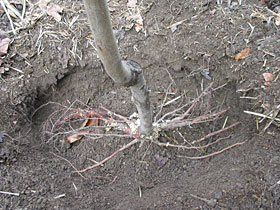
When planting bare-root trees, make the hole wide enough that the roots can spread out freely.
- Test the hole for adequate drainage by filling it with water. The water should drain overnight, or at least at a rate of ½ inch per hour.
- Remove any container material, including ties, wire basket or burlap.
- Put the tree in the hole. The top of the root ball should be at ground level.
- If roots wrap around the root ball, loosen them. Spread the roots out into the wide hole. Keep them moist while planting. Trim damaged roots. Do not plant trees if the roots wrap completely around the root ball. Return the tree to the nursery for a replacement.
- Backfill the hole with the soil that you removed while digging it. Tamp the soil lightly as you fill the hole, to remove air pockets. Water thoroughly while backfilling and after finishing. Soak deeply.
- Cover the planting area with 3 to 4 inches of organic mulch. Keep the mulch 6 inches from the tree trunk. Don't use sheet plastic under the mulch, as it can kill the tree roots.
- Prune only to correct major form problems, such as rubbing branches. NEVER top a tree, as this harms roots and makes the tree structurally unsound.
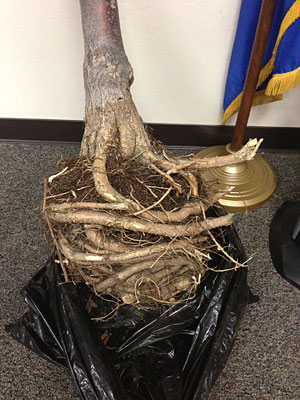
The roots of this tree circled the root ball and eventually killed the tree. Don't plant trees that have roots circling the pot.
- In windy areas, stake to secure the root ball. Place two upright stakes, no taller than the height at which the first tree limb appears, into undisturbed soil, opposite one another and perpendicular to the prevailing winds. Use soft, flexible ties to attach the trunk to the stakes. The tree should be able to bend in the wind. Remove the stakes after the first year or two.
- Protect your tree from the sun and animals. If the young tree is exposed to full sun during the winter months, consider wrapping the trunk or painting it with white latex paint to protect it. Use wire caging if critters are an issue.
Hefner, M.
2019,
Tips for Healthy Landscape Trees,
Extension | University of Nevada, Reno. IP


